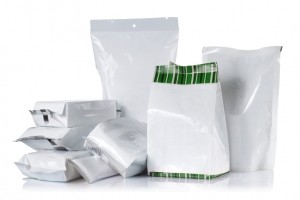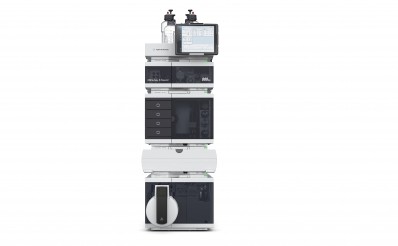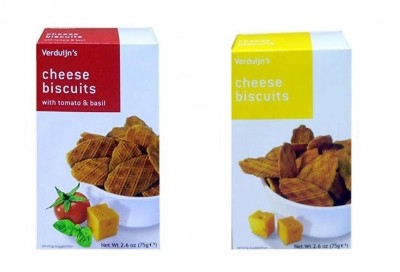Agilent on mineral oil, 3-MCPD and fipronil

John Lee, global food market manager at Agilent Technologies, spoke to FoodQualityNews at the Recent Advances in Food Analysis (RAFA 2017) conference in Prague.
“Since the last RAFA [in 2015] there have been developments in areas of concern…such as fipronil in eggs and the realisation that if it was in eggs it was probably in chicken meat as well,” he said.
“Using a chemical that people would more associate with treating their pets to treat animals in the food chain was scary and it was interesting that it wasn’t picked up sooner. It illustrates to a degree why there is a trend these days for food labs expanding the scope of pesticides that they look for and the commodities they test.”
Non-targeted and targeted methods
Lee said he would like to think such situations could be caught sooner in the future but was happy the discovery showed how testing can track down inappropriate practices.
“There are two strategies to catch such things: One would be more non-targeted strategies as you have the chance of seeing a signal and, whilst you may be surprised by that signal and it may impact a routine lab’s throughput requirements, at least they are going to see it and something is going to get done.”
However, Lee said he didn’t believe it was necessary to go to that length.
“I think targeted strategies that are being used can be improved to stand a better chance of picking up fipronil. In a mass spectrometer, for example, fipronil responds better in negative ion mode than positive ion mode. Many labs will just run in positive mode as must compounds are in positive mode.
“Maybe what fipronil demonstrates is labs should make sure they are doing a negative ion run as well. That could still be targeted, fipronil is a known pesticide and the metabolites of fipronil are known as well, it is just a question of incorporating it into these targeted strategies.
”Triple Quad mass spectrometry can analyse for many hundreds of compounds, you just have to choose to put that in there.”
It is also important to make sure the right products are being tested, said Lee.
“Fipronil is the headline but another question it raises is how much testing should we do on eggs or any food of animal origin. Currently there are very few positives that occur when food of animal origin is tested for pesticides but still broad scope testing is essential to find unexpected new trends.”
Mineral oil not leaching through the analytical gaps
Lee said there is growing concern around mineral oil and there is a great deal of uncertainty about where it is coming from.
“There are many places where it can come from, packaging is probably the usual mode of action because people want to use recycled paper that may have mineral oil in it but there may be other reasons mineral oil is showing up such as issues on the production line.”
The European Union Reference Laboratory on Food Contact Materials (EURL-FCM) is developing extraction techniques to measure the extractable profile of food packaging and there are reference methods for extracting out of food. The Joint Research Centre (JRC) hosts the EURL-FCM.
“Most of the testing I see is focussed on the packaging which makes sense,” said Lee.
“Lets use simulants to quality control the packaging and we cut off the threat at the source. People who make food packaging are constantly getting a new raw material in or changing their processes in some way and a small change means a need to relook again at the compounds that might result in terms of a leachable profile.”
Separation headache
Lee said there are analytical challenges to detecting mineral oil because of the complexity of petroleum contamination.
“There are many different chain lengths and branching isomers of these things that come out of the petroleum industry – you have aromatic ones and aliphatic ones,” he said.
“Typically people would use liquid chromatography to separate aromatic and aliphatic fractions and then use GC to analyse the complexity of the different isomers themselves. That poses a lot of problems because you can lose recovery as you jump from one technique to another.
“We believe the answer is hyphenation, so to have LC-GC connected together. We are seeing a lot of interest in the use of that technique to analyse MOSH and MOAH simultaneously.
“We have a system which is a two channel GC which measures the two together. That is important because if you are screening what you need to do is have a fast method and if you can do MOSH and MOAH simultaneously you can get through more samples and cover the risk.”
Lee said the next step after discovering mineral oil is finding out where it came from.
“That requires you to try to identify the type of petroleum contamination and the use of mass spectrometry with accurate mass can help labs to do verification on what happened,” he said.
“As far as I am aware when I talk to contract labs, there are a lot of positive hits showing up in the screening. So the importance of verification methods to follow up on that is becoming increasingly important. We are working with collaborators to find out how best to do that.”
Chlorinated Triglyceride process based contaminants
Glycerol-based process contaminants found in palm oil and used in products such as infant formula are another area of focus, said Lee.
EFSA assessed the risks of glycidyl fatty acid esters (GE), 3-monochloropropanediol (3-MCPD), and 2-monochloropropanediol (2-MCPD) and their fatty acid esters last year. The agency said the substances raise potential health concerns.
The AOAC Stakeholder Panel on Infant Formula and Adult Nutritionals (SPIFAN) is developing a standard for 2- and 3-MCPD and glycidyl esters (GE) in finished infant formula products.
Work is supported by the Infant Nutrition Council of America (INCA), a trade association of infant formula manufacturers including Abbott Nutrition, Danone, FrieslandCampina, Nestlé and Perrigo Nutritionals.
Lee added future focus areas include analysis for pesticides and mixtures, veterinary drug and heavy metal testing.
- Stay tuned for our interview with John Lee and Jenny Nelson on heavy metals




















